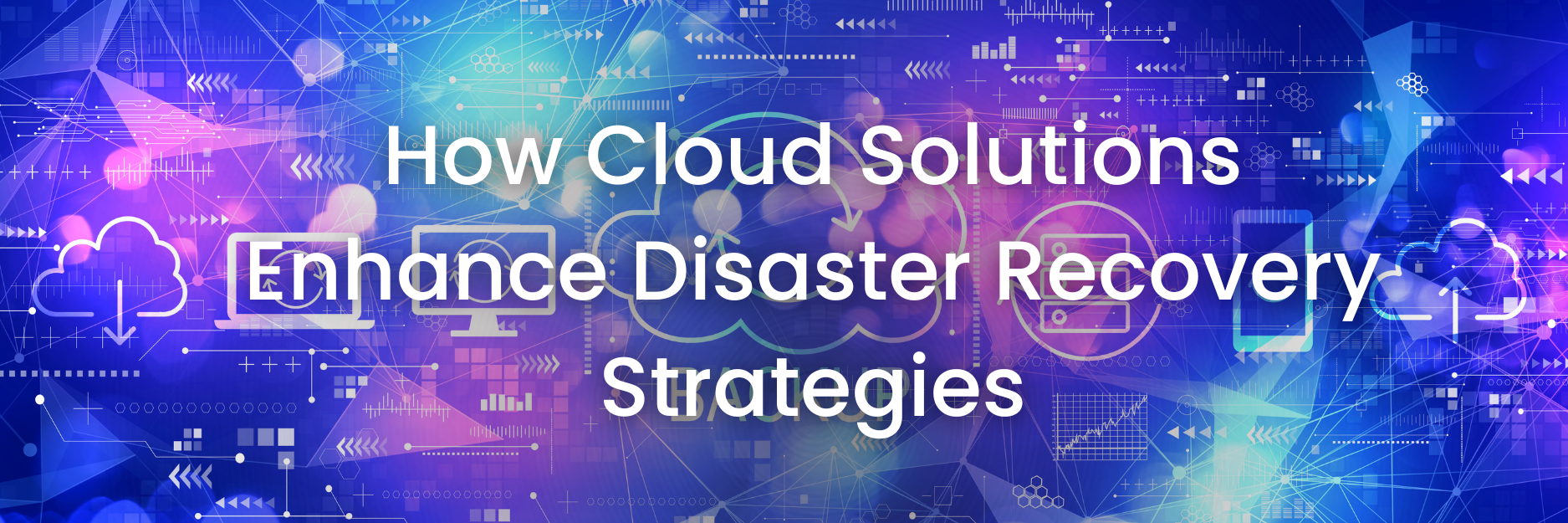In today’s digital age, businesses rely heavily on their IT infrastructure to store critical data, run daily operations, and engage customers. As a result, ensuring that your business can quickly recover from disruptions—whether due to natural disasters, cyberattacks, or hardware failures—is more important than ever. Cloud technology has emerged as a game-changer in disaster recovery, offering solutions that traditional methods simply can’t match.
The Evolution of Disaster Recovery: From Tape Backups to the Cloud
For decades, businesses relied on physical backup methods like tapes or external hard drives stored onsite or in remote locations. While these methods provided some protection, they had inherent weaknesses: backups were often performed manually, could become outdated quickly, and were vulnerable to physical damage or theft.
Cloud disaster recovery, however, shifts this paradigm by storing your backups on secure, offsite servers maintained by specialized providers. This evolution offers a level of reliability, scalability, and accessibility that physical backups can’t compete with.
Why Cloud Disaster Recovery Makes Sense
Here’s what makes cloud solutions particularly powerful for disaster recovery:
1. Offsite and Secure Storage
Cloud providers use multiple data centers across different geographic locations. This means even if one data center is affected by a natural disaster, your data remains safe and accessible from others. For businesses located in disaster-prone areas, this geographic diversity is critical.
2. Automated and Frequent Backups
Manual backups are prone to human error and often happen infrequently. Cloud backup systems can be configured to run continuously or on a schedule as tight as every 15 minutes. This ensures your backup data closely mirrors your live data, minimizing potential data loss.
3. Accessibility and Flexibility
Cloud backups can be accessed from anywhere with an internet connection. This means if your office is inaccessible due to disaster or other disruptions, you can still access critical data and applications remotely, keeping your business running.
4. Scalability and Cost Efficiency
Cloud storage scales with your business needs—no need to invest heavily in physical storage devices upfront. This pay-as-you-grow model makes cloud disaster recovery more affordable for businesses of all sizes.
Real-Life Scenario: Imagine a Hurricane’s Aftermath
Consider a coastal retail chain that faces a hurricane. Their headquarters and primary data center are forced to shut down due to flooding and power outages. Thanks to their cloud disaster recovery solution, the company’s customer databases and inventory management systems are instantly available from cloud servers. Employees working remotely can continue processing orders and serving customers without interruption, safeguarding revenue during a critical period.
Hybrid Disaster Recovery: Combining the Best of Both Worlds
While cloud solutions offer many advantages, many businesses adopt a hybrid disaster recovery model that integrates both cloud and onsite systems. This approach enhances resilience by:
- Maintaining onsite backups and failover systems for fast local recovery when possible
- Using cloud storage for offsite data protection and disaster scenarios
- Allowing seamless failover between systems, ensuring maximum uptime
This hybrid model suits companies that require high availability and cannot afford extended downtime.
Overcoming Challenges with Cloud Disaster Recovery
Despite its benefits, some businesses hesitate to fully embrace cloud disaster recovery due to concerns like:
- Data security: It’s natural to worry about storing sensitive data offsite. However, reputable cloud providers use advanced encryption, multi-factor authentication, and compliance certifications to protect your data.
- Bandwidth and connectivity: Recovery depends on reliable internet access. Businesses should plan for redundant internet connections and test recovery procedures regularly.
- Customization and complexity: Setting up an effective cloud DR plan requires understanding your business’s unique needs and IT environment. Partnering with an experienced provider like PC Works Tech can simplify this process.
Personal Experience: A Law Firm’s Cloud DR Success Story
A regional law firm we support was hit by a ransomware attack that encrypted all their onsite servers. Because they had a hybrid cloud disaster recovery setup, their operations were quickly restored by failing over to cloud backups. This swift recovery prevented costly legal delays and preserved their client trust, highlighting how cloud disaster recovery can be a lifeline during crises.
Why Choose PC Works Tech’s Business Continuity Excellence?
Our Backup and Recovery Solution harnesses the power of cloud disaster recovery combined with onsite failover for:
- Continuous, near real-time backups every 15 minutes
- Secure, geographically diverse cloud storage
- Onsite server units for rapid failover and business continuity
- 24/7 monitoring and expert support to detect and resolve issues early
This comprehensive solution gives you peace of mind that your data and business operations are protected—no matter what challenges arise.
Take the Next Step Toward Resilience
Cloud technology has transformed disaster recovery from a burdensome necessity into a strategic advantage.
Contact PC Works Tech today to explore how our Business Continuity Excellence solution can tailor a cloud disaster recovery strategy that fits your business needs and budget. Protect your data, maintain operations, and stay ahead of disruptions.




No responses yet